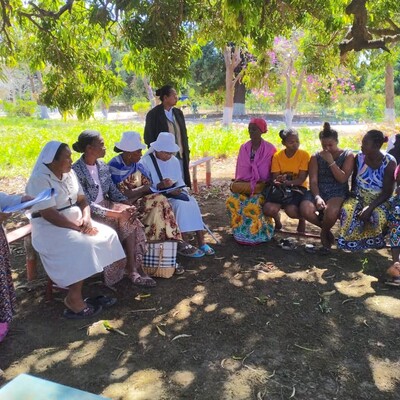
Improving animal health in southern Africa—Why it matters and what to do

Cattle being herded towards green pasture on the flood plain in western Zambia (photo credit: WorldFish/Felix Clay/Duckrabbit).
In a new book chapter (Ch. 15, Technologies for agricultural transformation: Animal health), Delia Grace, a veterinary epidemiologist and food safety expert at the International Livestock Research Institute (ILRI), in Nairobi, Kenya, and the Natural Resources Institute, of the University of Greenwich, in the UK, says animal diseases are a threat not only to the livestock sector of southern Africa, but also to its economy (via reduced benefits from the region’s wildlife resources), and also to human health in the region.
The region’s state veterinary services name the highest priority epidemic diseases in southern Africa as foot and mouth disease followed by contagious bovine pleuropneumonia in cattle, peste des petits ruminants in goats and sheep, Newcastle disease in chickens and lumpy skin disease in cattle.
The endemic diseases, which though less dramatic may have even greater negative impacts than epidemic diseases, that are important in southern Africa are clostridial diseases, ticks and tick-borne diseases, helminth infections and African animal trypanosomiasis (known as sleeping sickness when it occurs in people).
The highest priority zoonotic diseases—those shared by animals and people—in southern Africa are rabies, brucellosis and anthrax. Other zoonoses are emerging and while human infection is still currently rare, as these pathogens evolve they may become better adapted to humans.
Highest-priority emerging infectious diseases are highly pathogenic avian influenza and Rift Valley fever.
Animal-source foods (milk, meat, offal, eggs), along with zoonoses, are an important source of food-borne diseases in the region. Unknown by most, the human health impact of food-borne disease is huge—comparable to that of HIV/AIDs, malaria or tuberculosis. The economic costs for low- and middle-income countries are at least USD115 billion a year. And food-borne diseases are likely to worsen in southern Africa over the next decades.
The highest priority wildlife diseases in southern Africa are are foot and mouth and anthrax, which are also diseases of livestock; the highest priority aquatic disease is epizootic ulcerative syndrome. . . .
[M]ost of the priority animal diseases in Southern Africa are ‘climate-sensitive’.
From the Conclusions
We are currently in an era of unprecedented interest and advances in animal disease research.
This livestock sector is growing rapidly in response to demand, and the consequent intensification brings about needs for new and adapted technologies.
Advances in epidemiology, molecular epidemiology, genomics, diagnostics, vaccines and ICT have great potential for controlling disease and improving productivity in livestock.
At the same time, the growing concern about human health externalities of livestock production (especially emerging zoonotic disease, foodborne disease and antimicrobial resistance), substandard animal welfare and the environmental impact of livestock is stimulating new investments in research to tackle these problems.
Much of the growth in demand for livestock products and generation of negative externalities occurs in [low- and middle-income countries], and these will be at the forefront of future research.
A One Health perspective that understands the importance of livestock in the context of animal, human and environmental health can help ensure a sustainable transformation of the livestock sector.
Read the open access book: Transforming Agriculture in Southern Africa, edited by Richard A. Sikora, Eugene R. Terry, Paul L.G. Vlek and Joyce Chitja, 2019.





















